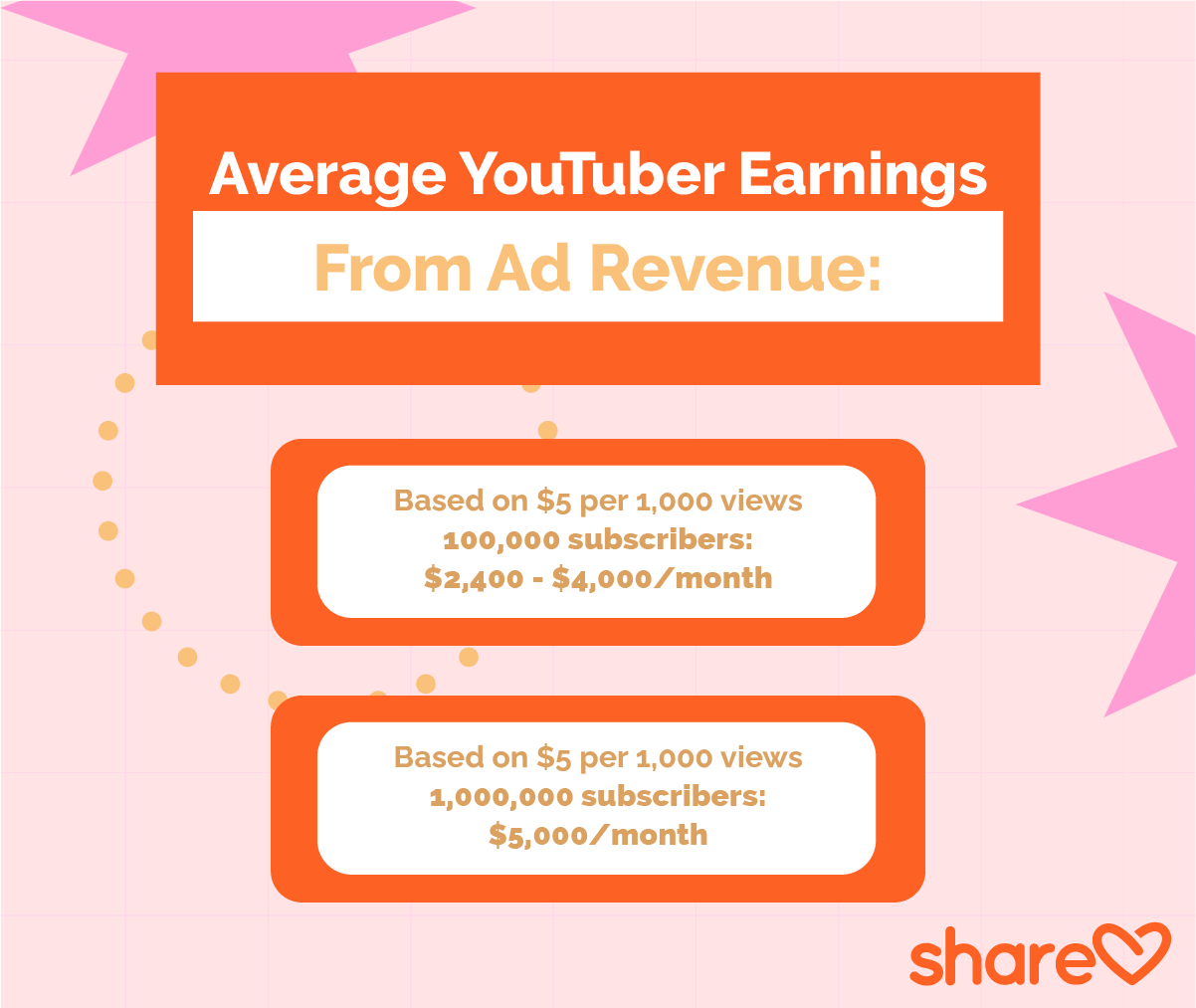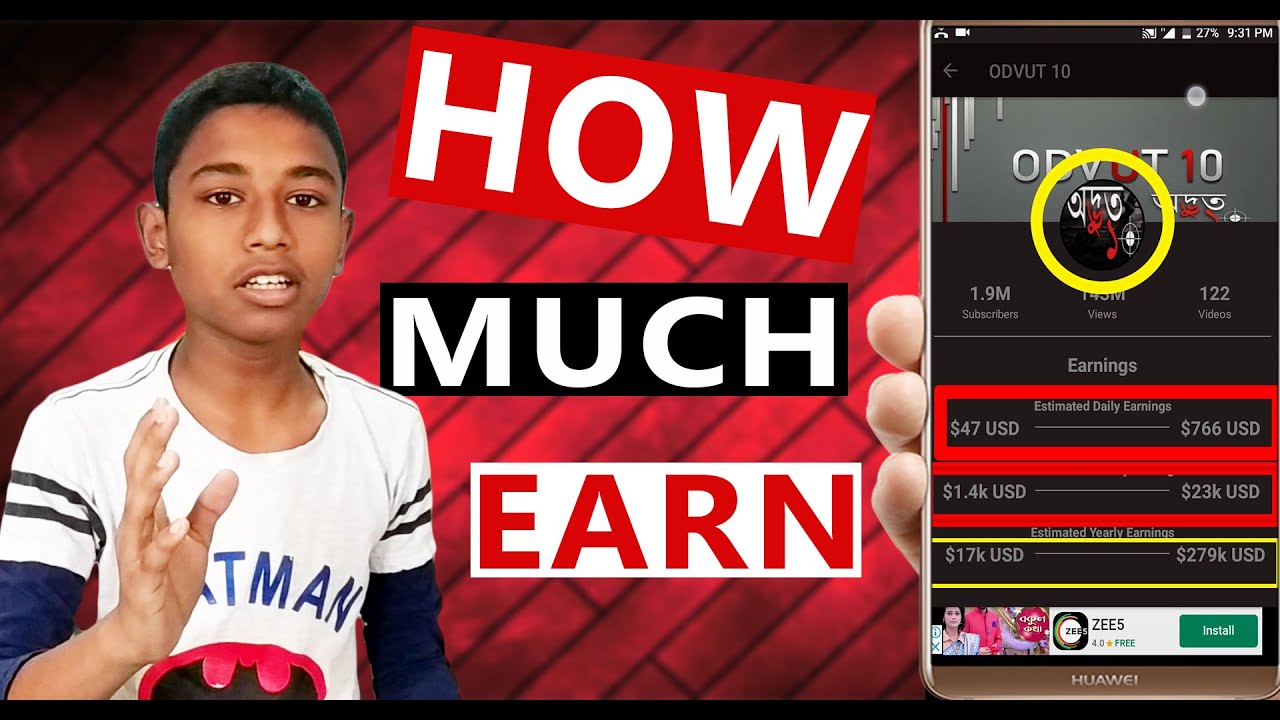Have you ever wondered how YouTubers make money? It's a question that many content creators and fans alike find intriguing. YouTube monetization is the process that allows creators to earn revenue from their videos. It’s not just a simple “press a button and get paid” scenario; there’s a lot to understand about how it all works. From ads to merchandise, superstar YouTubers can generate income in various ways. Let’s take a closer look at this fascinating topic.
The Role of Subscribers in Earnings

So, what part do subscribers play in a YouTuber's earnings? It’s much more significant than you might think! Subscribers provide a crucial foundation that can lead to various revenue streams. Here’s how:
- Increased Views: The more subscribers you have, the more likely your videos will receive views. This is essential because YouTube monetization typically relies on ad revenue, which is generated from views.
- Brand Partnerships: Brands are keen on partnering with influencers who have a large subscriber base. The more subscribers you have, the more appealing you become to potential sponsors.
- Community Engagement: Subscribers often engage with your content by liking, commenting, and sharing. High engagement boosts your video’s visibility, leading to more views and earnings.
- Memberships and Merchandise: Once you build a solid base of subscribers, you can offer channel memberships or sell merchandise. This direct support can significantly enhance your income.
To put things into perspective, let’s break down some numbers:
| Subscribers | Estimated Monthly Earnings |
|---|---|
| 1,000 | $50 - $1,000 |
| 10,000 | $500 - $10,000 |
| 100,000 | $2,000 - $40,000 |
In summary, the more subscribers you gain, the more opportunities you have to maximize your earnings. It’s a complex ecosystem, but understanding the role of subscribers can help creators plan their strategies for growth and income generation effectively.
Ad Revenue and its Impact on Earnings

When we think about how YouTubers make money, ad revenue often pops into our minds first. But what exactly is ad revenue, and how does it impact a YouTuber's earnings? Let's dive right in!
Ad revenue is money that YouTubers earn from displaying ads on their videos. The primary program that facilitates this is called the YouTube Partner Program (YPP). When a content creator meets the criteria, which includes having at least 1,000 subscribers and 4,000 watch hours in the past year, they can apply to join YPP. Once approved, YouTubers can start earning money from ads that play before, during, or after their videos.
Here's how ad revenue can be broken down:
- CPM (Cost Per Mille) - This is the amount advertisers pay per 1,000 views. CPM rates can vary widely based on factors like the audience's location, content type, and seasonality.
- CPC (Cost Per Click) - Some ads operate on a pay-per-click model, meaning YouTubers earn money when viewers click on the ads instead of just viewing them.
- Ad Types - The different formats of ads can also impact earnings. For instance, skippable ads may have lower CPM than non-skippable ads.
The impact of ad revenue on a YouTuber's earnings is substantial but not solely reliant on the number of subscribers. Engagement and viewer retention play a critical role here. More engaged viewers lead to more ad views, subsequently increasing earnings.
In a nutshell, while subscribers are essential for growth, ad revenue significantly impacts a YouTuber's income, making it a vital component of their overall earnings strategy.
Other Income Streams for YouTubers

While ad revenue is often a significant source of income for YouTube creators, it’s essential to recognize that many successful YouTubers diversify their income streams. This way, they ensure financial stability and always have backup revenue sources. Let’s explore some of the most common avenues apart from ad revenue!
- Sponsored Content - YouTubers frequently partner with brands to create sponsored videos. In these cases, brands pay creators to promote their products or services, which can be incredibly lucrative depending on the creator's popularity.
- Merchandise Sales - Many content creators run their own merchandise lines, selling everything from clothing to unique branded items. This not only generates revenue but also strengthens brand loyalty among followers.
- Affiliate Marketing - By promoting products through affiliate links, YouTubers earn a commission for every sale made through their link. This method can be especially effective if the products align with the creator’s content.
- Crowdfunding and Donations - Platforms like Patreon or Ko-fi allow fans to support their favorite creators financially. This can provide a steady income stream that does not rely on ad revenues.
- Consulting and Speaking Engagements - Experienced YouTubers often get invited to speak at events or consult for other creators, bringing in additional income while sharing their knowledge.
In conclusion, while ad revenue is an important aspect of a YouTuber's earnings, many successful creators have recognized that diversifying their income streams is crucial for financial stability and growth. By leveraging multiple avenues, they can maximize their earnings and build a sustainable career on the platform.
5. Factors Influencing Overall Earnings
When it comes to YouTuber earnings, it’s important to understand that not all channels are created equal. Several factors play a significant role in determining how much a YouTuber can earn from their subscriber base and overall channel performance. Let’s break down some of these crucial factors:
- Subscriber Engagement: It’s not just about the number of subscribers; how engaged they are really matters. High engagement rates often lead to increased advertisements and sponsorship opportunities.
- Content Type: Different types of content attract different advertisers. For example, channels focused on finance or technology might earn higher ad rates compared to lifestyle or entertainment channels.
- Geographic Location: Where a YouTuber's audience is located can significantly influence earnings. Advertisers pay more to reach viewers in certain countries, like the United States, compared to others.
- Ad Revenue: The way YouTube's ad revenue system works can impact earnings too. Channels can participate in the YouTube Partner Program, allowing them to earn from ads shown during their videos.
- Sponsorship and Partnerships: Many YouTubers supplement their income through sponsorships, brand deals, and affiliate marketing. The more influencer status a YouTuber has, the more lucrative these deals tend to be.
- Merchandise Sales: Many YouTubers sell branded merchandise. For some, this can be a substantial part of their income, particularly if they have a dedicated fan base.
All of these factors can significantly influence a YouTuber's overall earnings, making the landscape both dynamic and competitive. Understanding these elements can help aspiring YouTubers craft strategies to maximize their income potential.
6. Conclusion: The Bigger Picture of YouTube Income
In conclusion, unraveling the complexities of YouTuber earnings reveals a lot about the platform itself and the creator economy. While subscriber counts are often portrayed as the key indicator of a channel’s success, they merely scratch the surface of the revenue potential. The real earnings come from a robust understanding of several influencing factors: engagement, content type, geographic reach, advertising formats, sponsorships, and merchandise opportunities.
Think about it: a channel with a smaller but highly engaged audience can sometimes out-earn a channel with millions of subscribers simply because of its niche focus and strong viewer connection!
- Diversification is Key: Relying solely on ad revenue is risky. Successful YouTubers are increasingly diversifying their income streams through various means.
- Long-Term Growth: Building a brand and audience takes time. The most successful YouTubers often focus on long-term relationships with their viewers instead of quick cash grabs.
- Staying Adaptable: The YouTube landscape can change rapidly; adapting content and strategies accordingly can be crucial for sustained success.
Considering all these aspects, it’s clear that YouTube can be a lucrative platform, but it requires creativity, hard work, and strategic thinking. By understanding the bigger picture of YouTube income, aspiring creators can navigate their paths more effectively and set themselves up for success.










